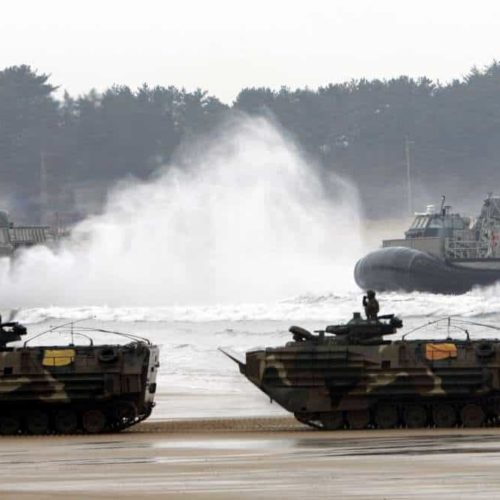Introduction
The Pentagon is undergoing the largest military transformation in the Pacific since World War II. Changes in Korea, Japan and Guam will affect thousands of military personnel and their families, and require major construction of new facilities and housing units. But the Pentagon has yet to figure out a total price tag for the venture or consider more cost-effective alternatives.
“DOD has embarked on complex initiatives to transform U.S. military posture, and these initiatives involve major construction programs and the movement of tens of thousands of DOD civilian and military personnel, and dependents—at an undetermined total cost to the United States and host nations. Although we have identified potential costs that range as high as $46.7 billion through 2020, and $63.9 billion through 2050, these estimates are volatile and not comprehensive,” the Government Accountability Office said.
According to the GAO, the DOD has not performed a comprehensive cost evaluation or an analysis of alternatives. Changes are already taking place in South Korea, with cost estimates totaling $17.6 billion through 2020, but DOD lacks complete cost estimates.
The lack of cost analysis raises concerns about investments that have already begun, like the $13 billion construction project at Camp Humphreys, South Korea. In addition to moving family members to the country, the initiative also involves constructing schools, medical facilities and other infrastructure. In total, officials estimate the total DOD population in South Korea could increase from approximately 54,000 to 84,000.
DOD is also reconfiguring its operations in Japan, Okinawa and Guam but yet to estimate the total cost of these projects. GAO identified approximately $29.1 billion that would be shared by the U.S. and Japan to fund these projects. The Pentagon declined to share its cost estimates for the projects.
One initiative, called “tour normalization”, would extend the tour length of military service members and move thousands of their dependents to South Korea, which could cost $5 billion by 2020 and $22 billion or more through 2050. The Pentagon did not perform a cost alternative analysis for tour normalization.
“DOD is unable to demonstrate that tour normalization is the most cost-effective approach to meeting its strategic objectives,” the GAO said in its report.
Tour normalization is attractive to commanders since it gives flexibility in how U.S. military forces are used abroad and can improve the quality of life for military service members and their families. But it carries some unintended consequences as well.
DOD has not produced any analysis to show that moving families to South Korea is an option that most service members and their families would prefer. If a service member is deployed to South Korea and is redeployed to another region, they would still be separated from their families, who would also be separated from their extended family and friends in the U.S. with no apparent benefit.
The changes could also hurt military training. According to Air Force officials, training capabilities in South Korea for its F-16 pilots are inadequate and lengthening tours to 2 or 3 years would exacerbate this deficiency. Specifically, pilots do not get enough training time on South Korean ranges because the pilots must share ranges with South Korean pilots and South Korean ranges do not offer all of the types of training needed.
FAST FACT: If the changes are implemented as planned, they would increase the U.S. military presence on Guam from about 15,000 in 2009 to more than 39,000 by 2020, which will increase the current population of the island by about 14 percent.


Join the conversation
Show Comments